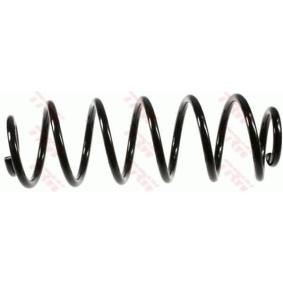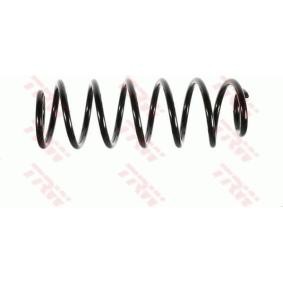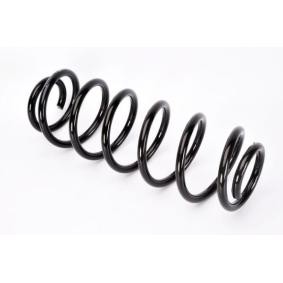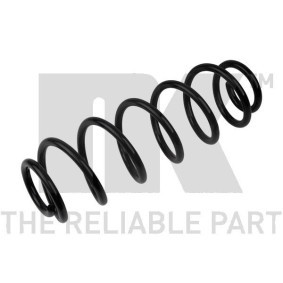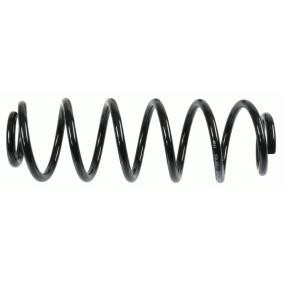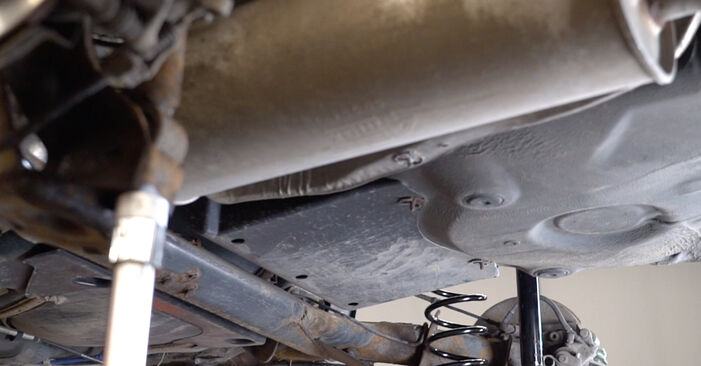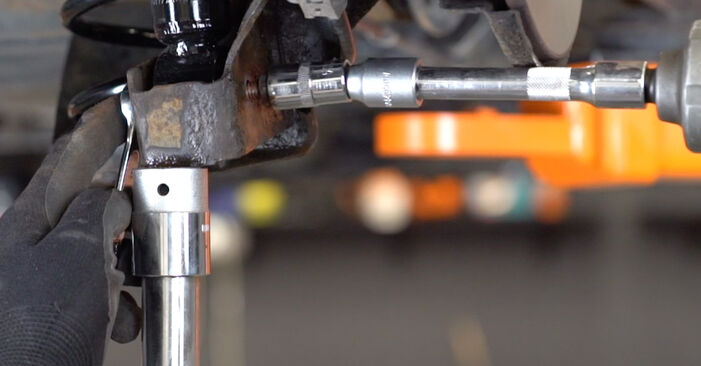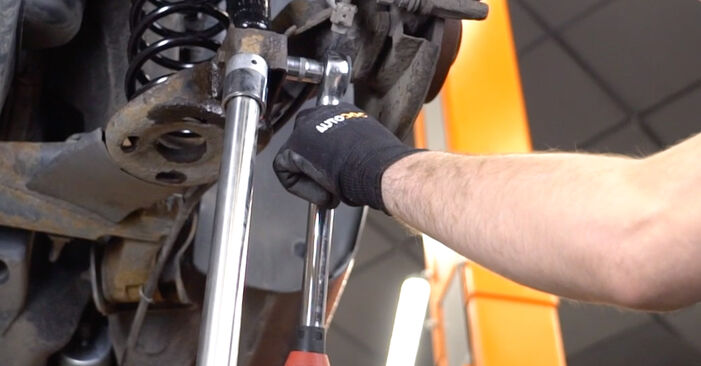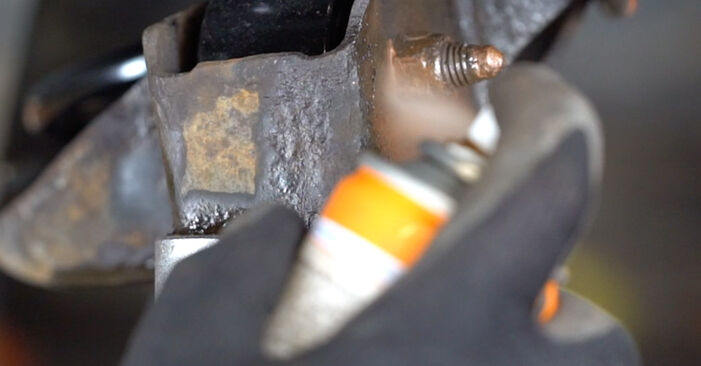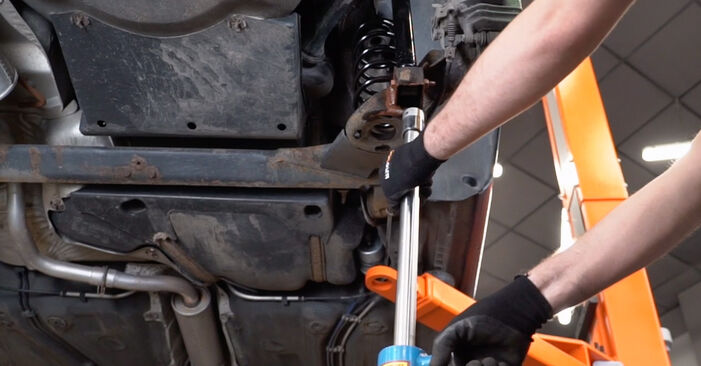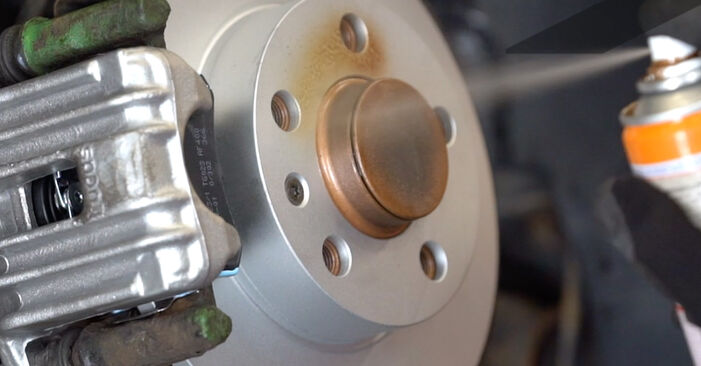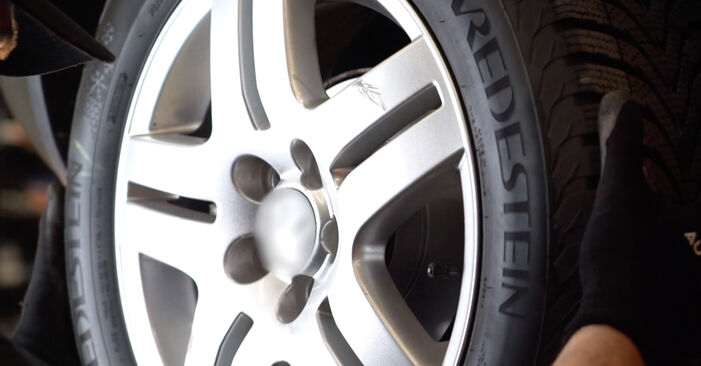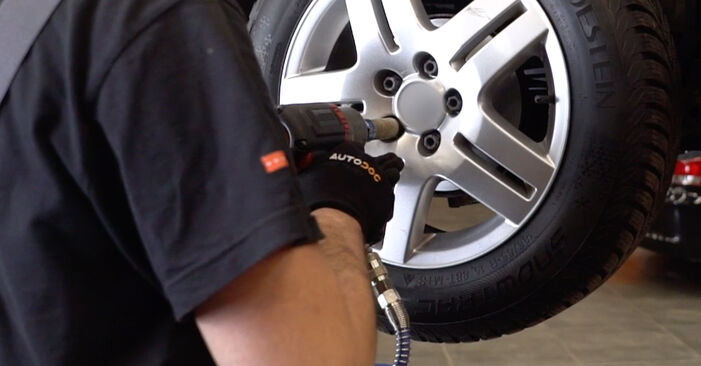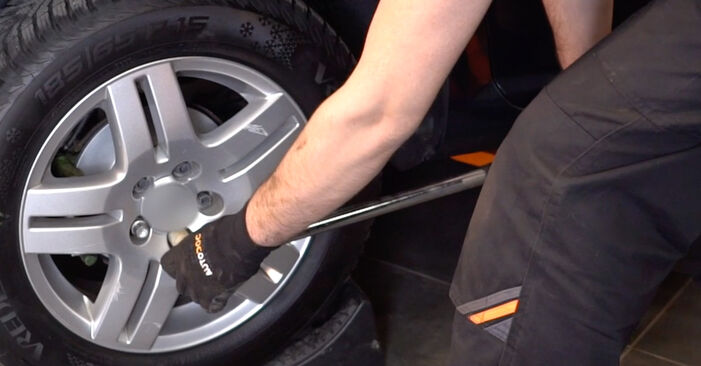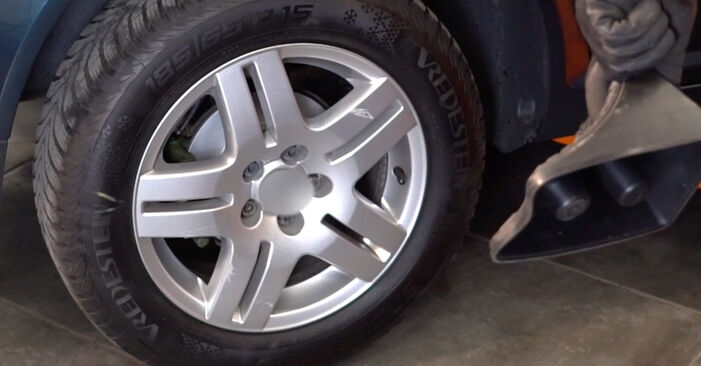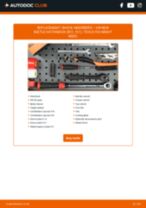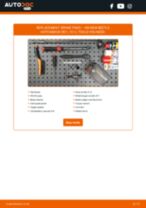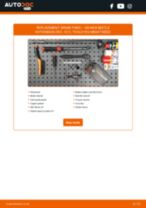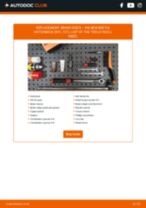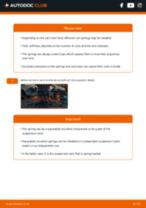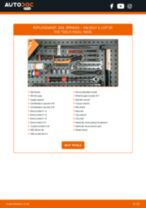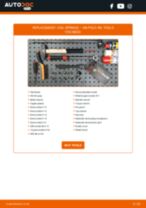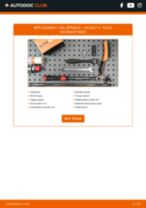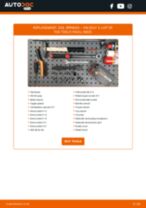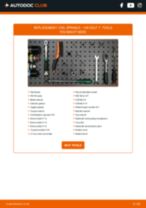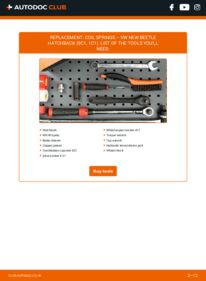
Disclaimer
How to change rear coil springs on VW New Beetle Hatchback (9C1, 1C1) – replacement guide
downloads:
11
Views:
107
Important!
This replacement procedure can be used for:
VW New Beetle Hatchback (9C1, 1C1) 2.0, VW New Beetle Hatchback (9C1, 1C1) 1.9 TDI, VW New Beetle Hatchback (9C1, 1C1) 1.6, VW New Beetle Hatchback (9C1, 1C1) 1.8 T, VW New Beetle Hatchback (9C1, 1C1) 1.6, VW New Beetle Hatchback (9C1, 1C1) 1.9 TDI, VW New Beetle Hatchback (9C1, 1C1) 1.4, VW New Beetle Hatchback (9C1, 1C1) 1.9 TDI, VW New Beetle Hatchback (9C1, 1C1) 1.8 T … View more
The steps may slightly vary depending on the car design.
VW New Beetle Hatchback (9C1, 1C1) 2.0, VW New Beetle Hatchback (9C1, 1C1) 1.9 TDI, VW New Beetle Hatchback (9C1, 1C1) 1.6, VW New Beetle Hatchback (9C1, 1C1) 1.8 T, VW New Beetle Hatchback (9C1, 1C1) 1.6, VW New Beetle Hatchback (9C1, 1C1) 1.9 TDI, VW New Beetle Hatchback (9C1, 1C1) 1.4, VW New Beetle Hatchback (9C1, 1C1) 1.9 TDI, VW New Beetle Hatchback (9C1, 1C1) 1.8 T … View more
The steps may slightly vary depending on the car design.
This video shows the replacement procedure of a similar car part on another vehicle
All the parts you need to replace – Springs for New Beetle Hatchback (9C1, 1C1) and other VW models
Alternative products
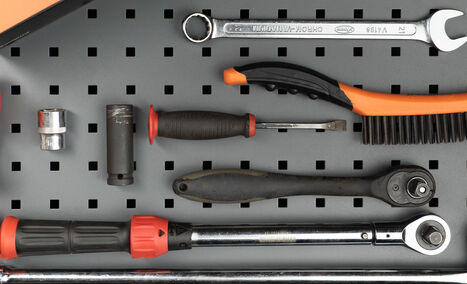
Wire brush
WD-40 spray
Brake cleaner
Copper grease
Combination spanner #21
Drive socket # 21
Wheel impact socket #17
Torque wrench
Tap wrench
Hydraulic transmission jack
Wheel chock
Replacement: coil springs – VW NEW BEETLE (9C1, 1C1). Tip from AUTODOC experts:
- Both coil springs of the rear suspension should be replaced simultaneously.
- The replacement procedure is identical for the left and right coil springs of the rear suspension.
- All work should be done with the engine stopped.
Replacement: coil springs – VW NEW BEETLE (9C1, 1C1). Take the following steps:
- Step 1Secure the wheels with chocks.Step 2
 Loosen the wheel mounting bolts. Use wheel impact socket #17.
Loosen the wheel mounting bolts. Use wheel impact socket #17. - Step 3Raise the rear of the car and secure on supports.Step 4
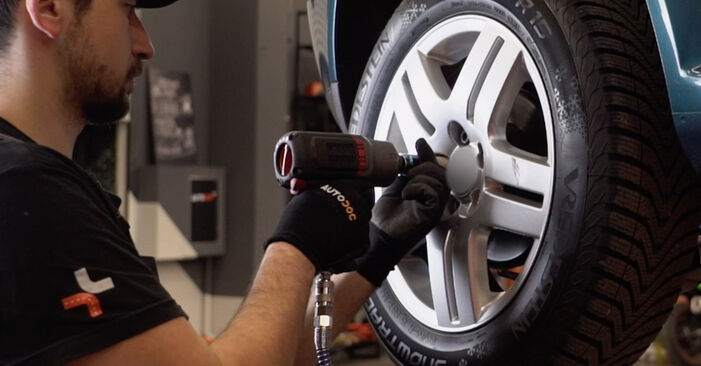 Unscrew the wheel bolts.AUTODOC recommends:Warning! To avoid injury, hold the wheel while unscrewing the fastening bolts. VW NEW BEETLE (9C1, 1C1)
Unscrew the wheel bolts.AUTODOC recommends:Warning! To avoid injury, hold the wheel while unscrewing the fastening bolts. VW NEW BEETLE (9C1, 1C1) - Step 5
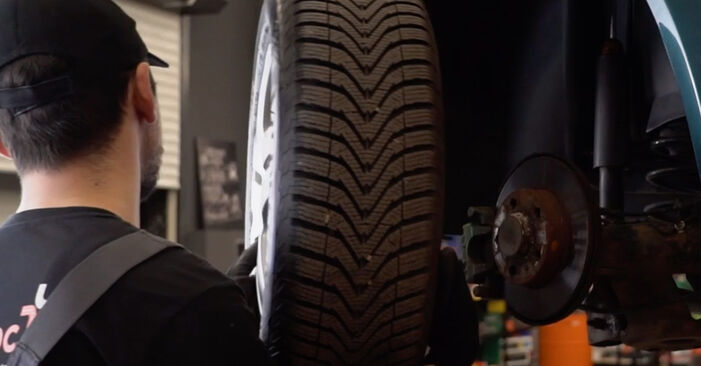 Remove the wheel.
Remove the wheel. - Step 6
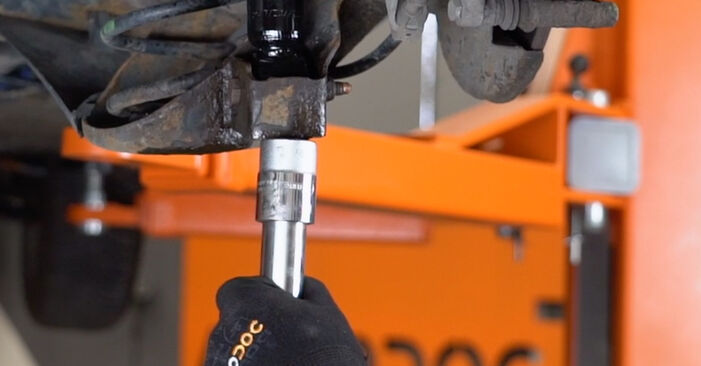 Secure the rear axle beam. Use a hydraulic transmission jack.
Secure the rear axle beam. Use a hydraulic transmission jack. - Step 7
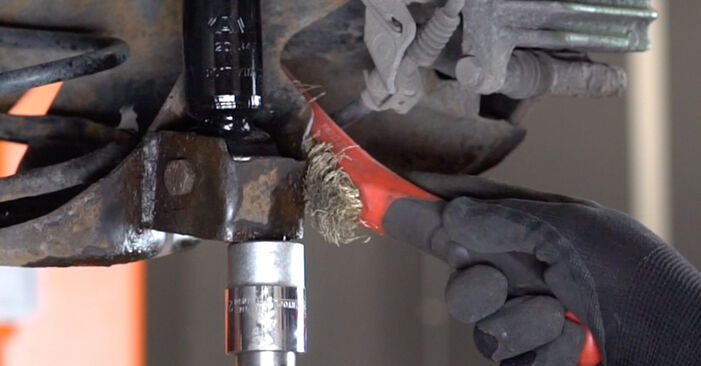 Clean the shock absorber fasteners. Use a wire brush. Use WD-40 spray.
Clean the shock absorber fasteners. Use a wire brush. Use WD-40 spray. - Step 8
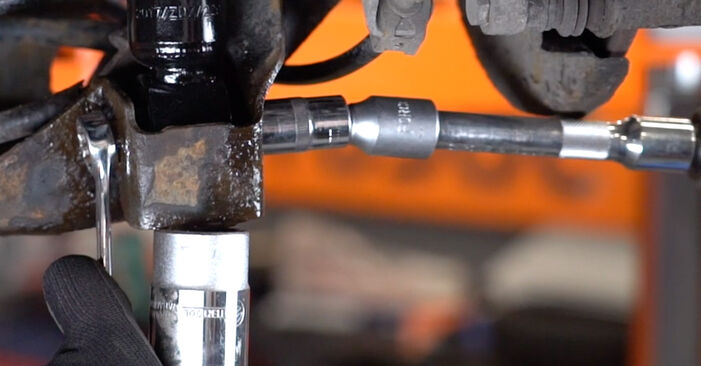 Unscrew the lower fastener of the shock absorber. Use a combination spanner #21. Use a drive socket #21. Use a tap wrench.AUTODOC recommends:VW NEW BEETLE (9C1, 1C1) – To avoid injury, hold the suspension strut while unscrewing the fastening bolts.
Unscrew the lower fastener of the shock absorber. Use a combination spanner #21. Use a drive socket #21. Use a tap wrench.AUTODOC recommends:VW NEW BEETLE (9C1, 1C1) – To avoid injury, hold the suspension strut while unscrewing the fastening bolts. - Step 9
 Remove the fastening bolt.
Remove the fastening bolt. - Step 10
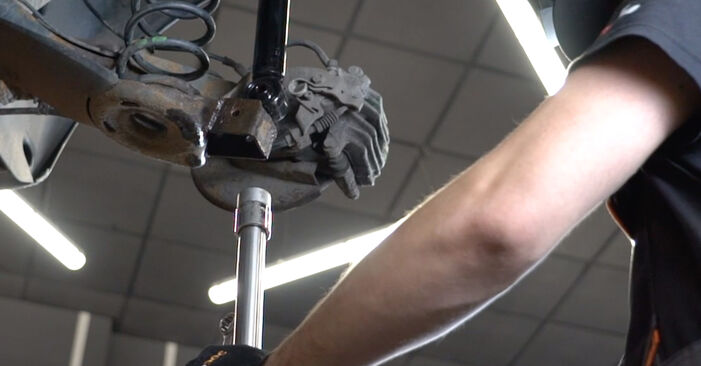 Remove the mounting from under the rear axle beam.AUTODOC recommends:Replacement: coil springs – VW NEW BEETLE (9C1, 1C1). Lower the transmission jack smoothly, without jerks, to avoid damaging components and mechanisms.
Remove the mounting from under the rear axle beam.AUTODOC recommends:Replacement: coil springs – VW NEW BEETLE (9C1, 1C1). Lower the transmission jack smoothly, without jerks, to avoid damaging components and mechanisms. - Step 11
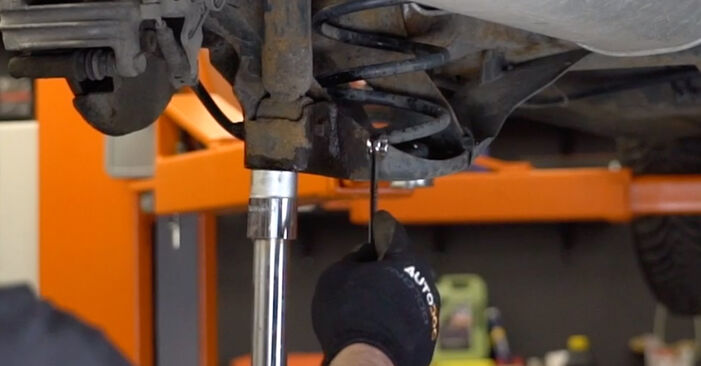 Secure the rear axle beam. Use a hydraulic transmission jack.
Secure the rear axle beam. Use a hydraulic transmission jack. - Step 12
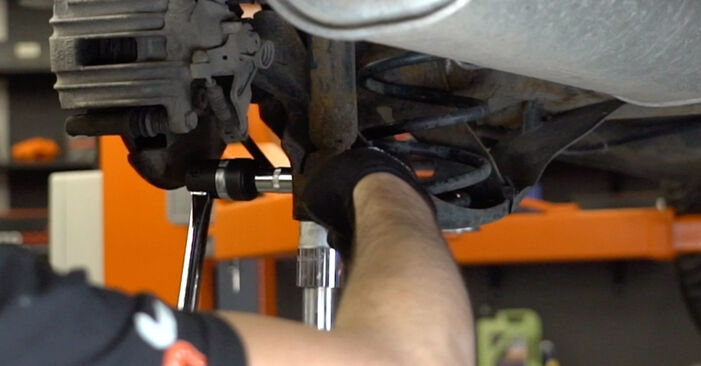 Unscrew the lower fastener of the shock absorber. Use a combination spanner #21. Use a drive socket #21. Use a tap wrench.
Unscrew the lower fastener of the shock absorber. Use a combination spanner #21. Use a drive socket #21. Use a tap wrench. - Step 13
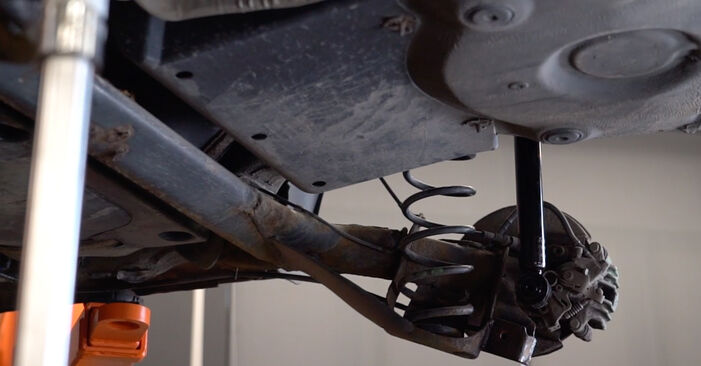 Remove the mounting from under the rear axle beam.AUTODOC recommends:VW NEW BEETLE (9C1, 1C1) – Do not lower the transmission jack sharply to avoid damaging components and mechanisms of the car.
Remove the mounting from under the rear axle beam.AUTODOC recommends:VW NEW BEETLE (9C1, 1C1) – Do not lower the transmission jack sharply to avoid damaging components and mechanisms of the car. - Step 14
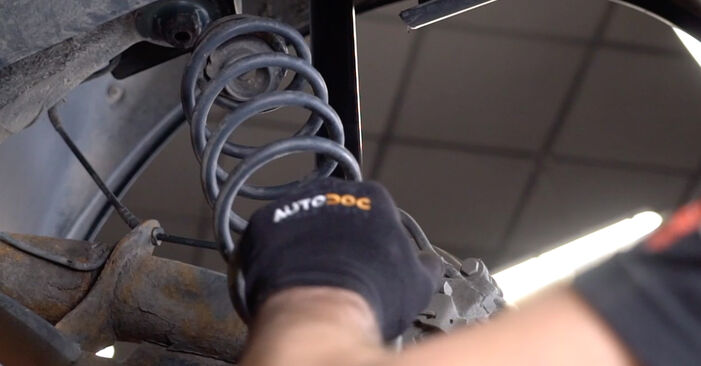 Remove the spring.
Remove the spring. - Step 15Remove the rubber spring spacer.Step 16
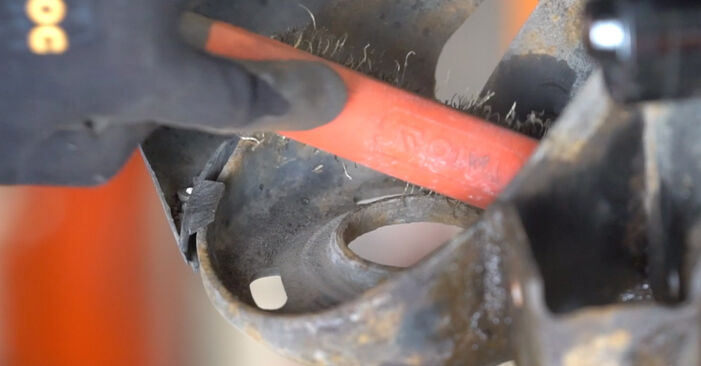 Clean the coil spring mounting seats. Use a wire brush. Use WD-40 spray.
Clean the coil spring mounting seats. Use a wire brush. Use WD-40 spray. - Step 17Install the rubber spacer on the new coil spring.Step 18
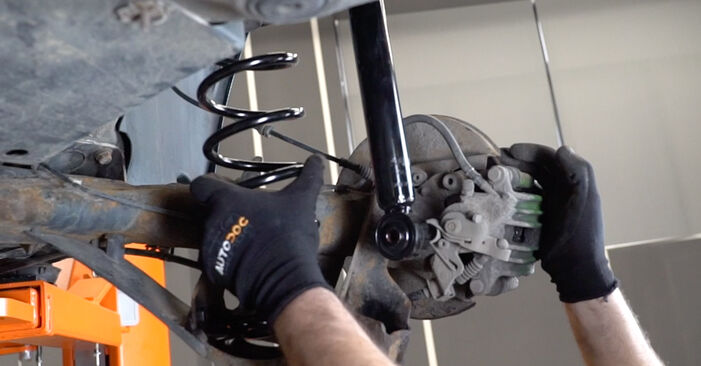 Install the coil spring together with the rubber mounts into the mounting seats.
Install the coil spring together with the rubber mounts into the mounting seats.
Was this manual helpful?
Please rate this manual on a scale from 1 to 5. If you have any questions, feel free to ask us.
Users voted – 0
Need New Tyres?
Find out which tyre and wheel sizes are compatible with the VW New Beetle Hatchback (9C1, 1C1) model

Popular maintenance tutorials for VW Beetle 9c
Complete guides for changing the Springs on different VW NEW BEETLE models
Unlock your car maintenance assistant!
Track expenses, manage logs, schedule replacements, and more.
Tips & tricks for your VW New Beetle Hatchback (9C1, 1C1)
View more
 What causes engine misfire? | AUTODOC
What causes engine misfire? | AUTODOC How to get your motorcycle ready for spring
How to get your motorcycle ready for spring CHECK ENGINE light turned on – step-by-step guide on what to do
CHECK ENGINE light turned on – step-by-step guide on what to do 5 mistakes made when washing the engine | AUTODOC tips
5 mistakes made when washing the engine | AUTODOC tips
Most commonly replaced car parts on VW NEW BEETLE

Time to replace parts? Get even better deals in our Shop app.

SCAN ME







